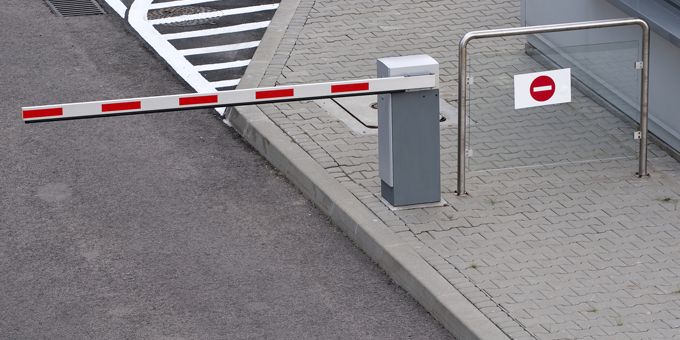The U.S. is at a critical point in the energy transition where there’s not yet enough renewable generation, yet there’s just enough to threaten the economic viability of fossil-fuel–fired generation, leaving a reliability concern for system operators.
 Breaking Through Clean Energy Barriers
Breaking Through Clean Energy Barriers

Jeff Perry, Executive Vice President, Asset Management | Agilitas Energy
As the cost to operate existing coal power plants continues to increase, data shows that 99% of the existing U.S. coal fleet is more expensive to operate than be replaced by solar or wind projects, making the energy transition to clean, renewable energy more cost-effective than ever before and the logical option moving forward. Despite this moment of promise for clean energy, barriers continue to hold back a successful energy transition.
The U.S. is at a critical point in the energy transition where there’s not yet enough renewable generation, yet there’s just enough to threaten the economic viability of fossil-fuel–fired generation, leaving a reliability concern for system operators. For the transition to become a reality, there needs to be a plan in place to break through barriers that limit the development of clean energy projects. This includes putting in the work to improve the renewable interconnection process, increase industry transparency and collaboration in that process and overcome intermittent challenges through the use of energy storage.
The renewable interconnection process
While cheap renewable energy, like wind and solar, is backing the momentum around the energy transition, if renewable energy developers remain stuck in the interconnection process and projects remain on hold in the queue, the U.S. still won’t achieve its clean energy goals.
It’s no secret the interconnection process is struggling to meet the demand for clean, renewable energy—causing major delays and backlogs, and taking years for approval for renewable energy projects to connect to the grid. In fact, interconnection request to interconnection agreement has increased sharply since 2015, exceeding, on average, three years in 2021.
As a result of the lengthy interconnection process, purchasing agreements can fall through and permits can expire—triggering the cancellation of an entire project. This has translated into fewer than one-fifth of solar and wind proposals actually making it through the interconnection queue, according to research from Lawrence Berkeley National Laboratory.
Until the U.S. improves its overwhelmed and antiquated systems to connecting renewable energy projects to the grid, the renewable interconnection process will remain a major barrier, holding back the energy transition.
Industry transparency and collaboration
Although the interconnection process itself lacks transparency and efficiency, collaboration and open communication between developers and interconnecting utilities can increase a project’s likelihood of being interconnected in a timely and cost-efficient manner. But without ongoing, open dialogue, timelines will continue to be dragged out and prolonged by unnecessary back-and-forth during the study process, resulting in developers being forced to walk away.
Increasing industry transparency and collaboration is a step in the right direction for improving the renewable interconnection process. Utilities control much of what happens in the energy industry and have access to information that a developer needs, like interconnection studies, costs, queues and accurate grid maps to get projects built. Regulatory agencies can play a role in facilitating an efficient framework to quickly gather stakeholders and search for agreeable solutions. Regulators should investigate interconnection cost allocation policies that enable certain infrastructure improvements to be treated as typical utility reliability, resiliency and asset management projects.
Ultimately, utilities, developers and regulators all working together would create more transparency into the renewable interconnection process, help speed up review times and shorten the queue. There is a barrier in place, though. For this to happen, utilities need to be financially incentivized to speed up renewable interconnection. This would enable all industry players to be working towards the same cleaner and greener energy future together.
Intermittent challenges and energy storage
Arguably, the biggest barrier to meeting our clean energy goals is that many renewable energy sources, such as solar and wind powered resources, are intermittent in nature. Increased use of energy storage will enable more intermittent energy to reach the grid by firming up and shifting the use of that energy. Increasing the use of energy storage is key to unlocking the energy transition, as it’s predicted that in 2023, energy storage capacity will likely more than double.
Further benefits of pairing energy storage with renewable energy projects include saving on permitting, planning and construction costs—when compared to developing the projects separately. Energy storage facilities can also help avoid the cost of expensive transmission and distribution (T&D) build-outs. And when T&D build-outs are swapped in favor of storage facility development, those T&D funds can be reallocated toward projects to help further integrate renewable energy project development.
It’s clear the energy transition is underway, and the U.S. is moving in the right direction. But in order to break through clean energy barriers and make the transition a reality, work must be done to improve the renewable interconnection process, increase industry transparency and collaboration in that process and increase the use of energy storage.
The content & opinions in this article are the author’s and do not necessarily represent the views of AltEnergyMag
Comments (0)
This post does not have any comments. Be the first to leave a comment below.
